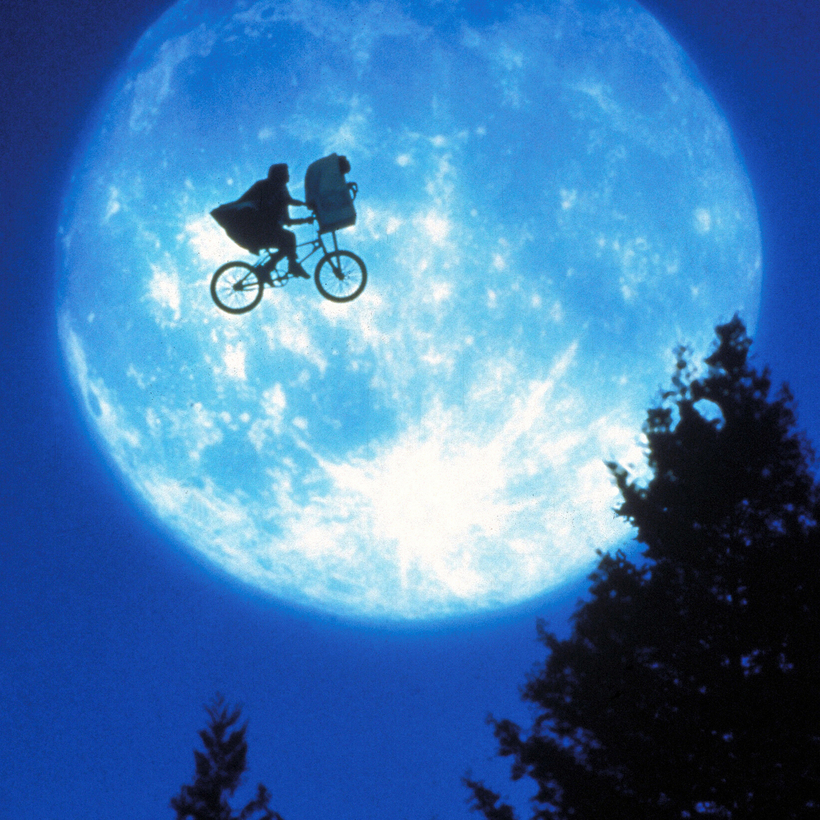The birth of the summer blockbuster is usually dated to the monstrously profitable release of Jaws, in 1975, or Star Wars, in 1977, depending on whom you ask. But if you ask Chris Nashawaty—author of The Future Was Now: Madmen, Mavericks, and the Epic Sci-Fi Summer of 1982—a different annus mirabilispredicts today’s superhero era of fan-friendly fantasy. In 1982, a wave of outlandish genre movies crowded Hollywood’s center stage as never before, led by a new box-office champ, E.T.: The Extra-Terrestrial, which weighed in at $359 million.
Nashawaty details the making of—deep breath—E.T., Blade Runner, Poltergeist, Star Trek II: Wrath of Khan, Mad Max 2: The Road Warrior, Tron, The Thing, and Conan the Barbarian. The Entertainment Weekly alum describes a perilous marriage of convenience between a fresh cadre of dazzling world-builders and financial backers who saw Star Wars–style dollar signs. Toggling through the movies like a Christopher Nolan montage, he plays up the risks for an industry that saw these movies as kids’ stuff, or folly, at a time when the Henry Fonda weepie On Golden Pond could still command over $100 million at the box office.

Not that anyone was expecting the next Star Wars per se, partly because 1980 had already brought The Empire Strikes Back. But each 1982 title came with cliff-hangers about creative differences and backroom bean-counting. Could Ridley Scott’s dystopian Blade Runner survive budget overruns and his own perfectionism? Would Star Trek fans riot over the rumored death of Spock? Did a past-its-prime Disney have the nerve for the blue-neon computer fantasias of Tron? Was a glad-handing Austrian bodybuilder really to be our next action hero in Conan?
The industry’s wagers didn’t all involve unknown quantities when it came to track records. Steven Spielberg’s pop mastery minted money—Jaws, Close Encounters, Raiders—and E.T. had Melissa Mathison’s empathetic script to articulate the director’s roiling feelings about childhood and divorce. (Spielberg, a father of seven, later said that the movie empowered him to become a parent.) Scott’s hit Alien had brought a moody edge back to space adventure only two years after Star Wars. Even horror diehard John Carpenter (The Thing) had box-office bona fides thanks to Halloween, and George Miller’s first Mad Max, a global phenomenon, gave the Aussie newcomer a scrappy proof of concept for supersizing it.
The angst that truly ripples through these chronicles is the unpredictable question of what will capture the imagination of audiences. With Conan, Oliver Stone’s original drugs-era script was deemed too insane to shoot in full, with its mutant pigs and four-hour run time—yet his “crush your enemies” line remains immortal. Nicholas Meyer’s Wrath of Khan preserved the crew bonhomie that fans loved, despite Paramount honcho Barry Diller’s hating the title and the dead Vulcan. Everyone agrees that the special effects (and the Jeff Bridges aspect) in Tron—orchestrated by hippie-ish animator Steven Lisberger—were cool, even if the movie flopped.
Nashawaty rightly dwells on what can happen when a fully realized genre movie fails to connect with the ticket-buying public of its time. On what he dubs “the worst day in the history of film criticism,” Blade Runner and The Thing were shrugged off by many reviewers and audiences. Maybe people couldn’t follow Harrison Ford’s replicant-hunter through the neo-noir’s smoke and mirrors, but its darkly glam vision of future-shock Los Angeles is now canonical, electrified by talents like industrial-design guru Syd Mead, who charged $1,500 per day.

Genre fans have since rallied around The Thing too, embracing the gore and desolation of this Antarctic nightmare about a shape-shifting entity. But one Carpenter anecdote from its release is perhaps even more terrifying. When a girl asked him what exactly the movie’s monster was, Carpenter said, more or less, “Use your imagination”—to which she replied, “Oh god, I hate that!” Carpenter’s glum conclusion: “The audience hates uncertainty.” Safer perhaps to really put it out there like the Spielberg-produced hit Poltergeist, with its haunted-house razzle-dazzle like an evil Pee-wee’s Playhouse.
Nashawaty frames his book by celebrating the rise of rabid genre fans—“smart and selective sensation seekers”—whose Comic-Con gathering is today a studio-sanctioned showcase. But this happy army is never fully fleshed out, and his analysis begs the question: Where were they on Blade Runner, whose thrills wowed even its ornery source novelist, Philip K. Dick?
Maybe, instead, Spielberg got it right, again. About E.T., he reportedly said, “I thought that the audience needed an uplifting cry.” A good cry, or a good time: at the dawn of the 1980s and the country’s all-smiles Ronald Reagan reboot, the existential despair in Scott’s and Carpenter’s masterful works might have been too much to take. But if today’s plasticky alphabet soup of franchises ever gets you down, you can always throw on one of the killer tracks of 1982 for an alternate future.
Nicolas Rapold is a New York–based writer and the former editor at Film Comment magazine

